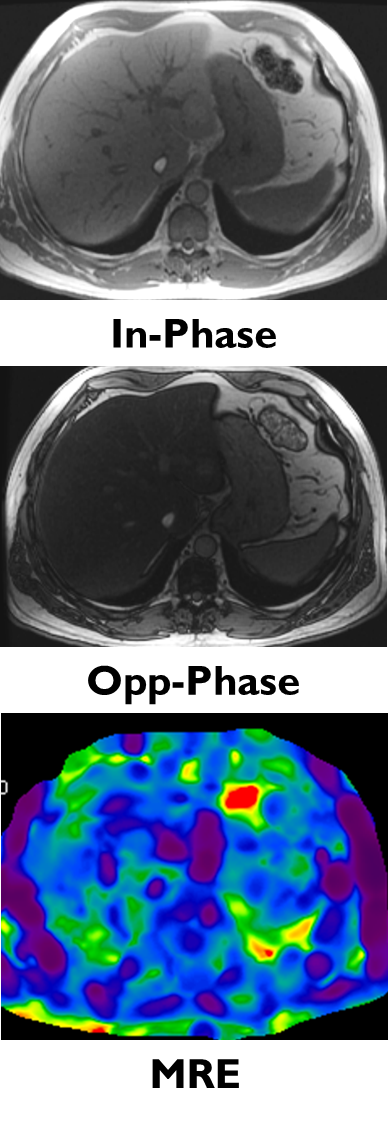|
MRI Value in Body Imaging: Role for Abbreviated Protocols?
Weekday Course
ORGANIZERS: Kathryn Fowler, Catherine Hines, Kartik Jhaveri, Lorenzo Mannelli, Valeria Panebianco, Scott Reeder, Reiko Woodhams
Monday, 18 June 2018
| S01 |
13:45 - 15:45 |
Moderators: Thomas Hope, Ihab Kamel |
Skill Level: Intermediate to Advanced
Session Number: M-07
Overview
This 2 hour session will address the value initiative as applies to MRI in liver, pancreas, prostate, and breast towards clinical imaging; in particular, the role of MRI in screening and surveillance through development of specialized (at times abbreviated) protocols.
Target Audience
This course is aimed at radiologists, imaging scientists and MR technologists who wish to review the state-of-art MRI protocols and indications for assessment of the abdomen.
Educational Objectives
As a result of attending this course, participants should be able to:
-Describe the role of body MRI in screening and surveillance of disease;
-Explain the value of abbreviated or optimized MRI protocols ; and
-Illustrate appropriate populations for the application of MRI screening protocols.
13:45
|
 |
 Liver Fat, Iron, & Fibrosis Abbreviated Protocols Liver Fat, Iron, & Fibrosis Abbreviated Protocols
Sudhakar Venkatesh
With the emergence of non-alcoholic fatty liver disease (NAFLD) as most common chronic liver disease, detection and quantification of liver fat and fibrosis becomes important. Iron overload frequently seen in association with fatty liver and liver fibrosis. Noninvasive quantification of liver fat, iron and fibrosis with MRI is now considered the standard for diagnosis and monitoring. In this presentation, typical clinical scenarios that requires MRI abbreviated protocol for liver fat, iron and fibrosis quantification, candidate sequences and multi-parametric MRI protocols will be discussed. MRI protocols will be illustrated with clinical examples and limitations will be highlighted.
|
14:09
|
|
 Liver Screening & Surveillance-HCC Liver Screening & Surveillance-HCC
Bachir Taouli
In this presentation, we will discuss the different scenarios in which AMRI can be used: 1) in the context of cancer screening or diagnosis (liver cancer, liver metastases, prostate cancer); 2) for liver health assessment (fat, fibrosis and iron), 3) in cases of contra-indications to gadolinium contrast. We will discuss the current evidence on the use of AMRI, cost savings, limitations and future directions.
|
14:33
|
|
 Screening the High-Risk Pancreas Screening the High-Risk Pancreas
Giovanni Morana
MRI is an imaging method useful in screening high risk patients for pancreatic cancer
|
14:57
|
|
 Active Surveillance in Managing Prostate Cancer Active Surveillance in Managing Prostate Cancer
Katarzyna Macura
Active surveillance (AS) has emerged as an important management strategy to avoid overtreatment of low-risk indolent prostate cancer and MRI of the prostate has been documented to offer high accuracy for the detection and localization of clinically significant cancer with high negative predictive value. The main role of MRI in AS is in patient selection and monitoring with a potential to minimize the invasiveness of follow-up. Abbreviated prostate MRI protocols offer a diagnostic accuracy and cancer detection rates that are equivalent to those of conventional full multiparametric MRIs.
|
15:21
|
|
 Breast Cancer Screening Breast Cancer Screening
Savannah Partridge
Abbreviated breast MRI protocols hold potential to reduce time and overall costs of breast MRI examinations, which could increase accessibility for more widespread screening. A growing number of studies have demonstrated that abbreviated MRI protocols can provide comparable diagnostic accuracy to that of conventional full MRI protocols for breast cancer screening. Current approaches and performance results will be reviewed, along with discussion of future directions.
|
15:45
|
|
Adjournment & Meet the Teachers |
|


